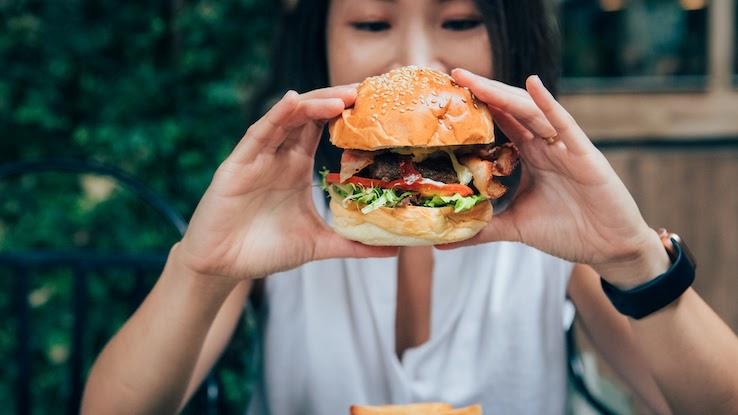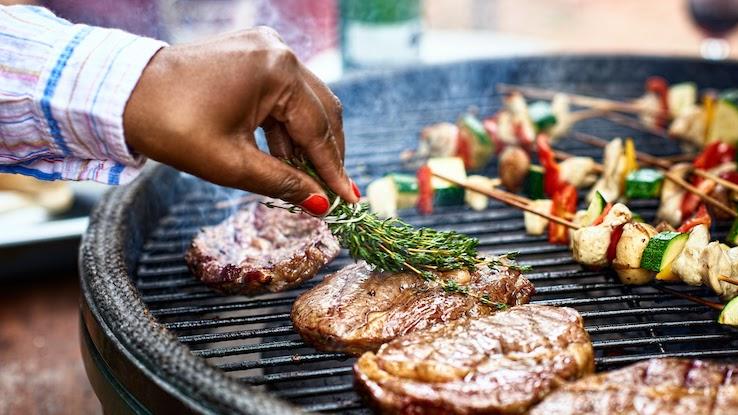Amino Acids Raise Testosterone Levels

Amino acids may sound familiar from your high school biology class, but did you know that your body needs them to survive? In fact, there are two different types of amino acids — essential and non-essential — that are important for your body to receive each day. Read on to learn more about essential amino acids and how to incorporate them into your diet to ensure your body gets the nutrients it needs.
Amino acids are the building blocks of proteins, which your body requires for use in the process of repairing and maintaining muscles, bones, organs and blood. Therefore, when you eat foods with protein, you're also ingesting amino acids.

As your body breaks down and digests the proteins you eat, amino acids are left over. Your body then uses these amino acids for a variety of important functions, including metabolic processes, growth and tissue repair. In addition, the amino acids can be reused to make proteins so they can carry out their aforementioned roles within your body.
The Basics of Essential and Non-Essential Amino Acids
Even though there are hundreds of amino acids in existence, the human body requires 20 specific amino acids for protein synthesis. Your body is capable of making 11 of these 20 amino acids, even if you aren't getting them in your diet. These 11 amino acids are classified as non-essential amino acids because you don't have to make sure that you're eating proteins that contain them.

The remaining nine amino acids that your body needs are called essential amino acids. Your body isn't capable of making these particular amino acids on its own, so it's critical that you eat foods that contain them. The nine essential amino acids are:
- Histidine
- Leucine
- Isoleucine
- Lysine
- Methionine
- Phenylalanine
- Threonine
- Tryptophan
- Valine
Where to Find Essential Amino Acids
You should try to include each of the nine essential amino acids in your diet each day. These amino acids are present in a variety of different protein-rich foods. The following is a list of the daily required amounts for an average adult (mg/kg of body weight) and the best food sources for each of the nine essential amino acids:

- Histidine (10 mg/kg): The highest concentrations of histidine are found in various types of meat, poultry, seafood and dairy products. Some grain products, such as rice and buckwheat, also contain histidine. Other sources of histidine include eggs and beans. You'll even find this amino acid in fruits and vegetables, including apples, pomegranates, citrus fruits, bananas, cantaloupe, cauliflower, potatoes, mushrooms, corn, spinach, carrots, celery, cucumber and beets.
- Leucine (39 mg/kg): Animal-based sources of leucine include beef, poultry, pork, fish, eggs (particularly the whites), gelatin and dairy products. Plant-based sources include soy, legumes (such as beans and lentils), corn, grains, seeds and nuts. In addition, a supplement called spirulina contains exceptionally high levels of leucine, and 100 grams of spirulina can provide more than your daily recommended intake.
- Isoleucine (20 mg/kg): Isoleucine is found in many of the same sources as leucine but typically at slightly lower concentrations. Animal-based sources include meats, fish, eggs and dairy. Beef, tuna and yogurt are good examples of isoleucine-rich foods. Plant-based sources include soy, legumes, oats, wheat and certain types of seeds.
- Lysine (30 mg/kg): The highest concentrations of lysine are found in meats, particularly red meat, pork and poultry. However, it can also be found in dairy, certain fish and eggs. Plant-based sources include legumes, soy, spirulina and some fruits and vegetables (such as avocados, mangos, potatoes, leeks and peppers).
- Methionine (10.4 mg/kg): Meats, eggs and seafood contain the highest concentrations of methionine. In particular, consuming 100 grams of tuna or brazil nuts will give you more than your daily recommended intake. Other plant-based sources, such as grains, soy, beans, corn, cauliflower and spirulina, also contain methionine at lower concentrations.
- Phenylalanine (25 mg/kg): Eating meat is the best way to get enough phenylalanine, which is found in the highest concentrations in beef, pork and poultry. Seafood, eggs and dairy are also animal-based sources with high phenylalanine levels. Legumes, soy, nuts, seeds and some grains are examples of plant-based sources. In addition, the artificial sweetener aspartame is a source that's often overlooked.
- Threonine (15 mg/kg): Lean meats (particularly beef, lamb and fish), gelatin and dairy products are good examples of animal-based sources with high threonine content. Carrots, bananas and soy are the richest plant-based sources; 100 grams of soybeans will provide more than your daily recommended value of threonine. Other legumes, nuts, seeds and vegetables contain lower levels of threonine.
- Tryptophan (4 mg/kg): Although it's commonly associated with turkey, the highest concentrations of tryptophan are actually found in soy, cocoa and certain nuts and seeds. Animal-based sources for this amino acid include poultry, red meats, fish, dairy and eggs.
- Valine (26 mg/kg): Dairy products and meat are the best sources of valine. Plant-based sources have lower concentrations of this amino acid, but good examples include soy, peanuts, some types of seeds, leafy greens, lentils and mushrooms.
Resource Links:
https://www.ncbi.nlm.nih.gov/books/NBK557845/
https://www.foodunfolded.com/article/9-essential-amino-acids-food-sources-to-find-them
https://apps.who.int/iris/bitstream/handle/10665/43411/WHO_TRS_935_eng.pdf?sequence=1&isAllowed=y
https://www.livestrong.com/article/517676-what-foods-contain-histidine/
https://www.livestrong.com/article/275274-foods-that-are-highest-in-isoleucine-leucine/
https://www.mountsinai.org/health-library/supplement/lysine
https://www.sciencedirect.com/topics/agricultural-and-biological-sciences/methionine
https://www.livestrong.com/article/317897-list-of-foods-that-contain-phenylalanine/
https://aminoacidstudies.org/l-threonine/#Dietary_sources_of_threonine
MORE FROM SYMPTOMFIND.COM
Amino Acids Raise Testosterone Levels
Source: https://www.symptomfind.com/health/essential-amino-acids-protein-health?utm_content=params%3Ao%3D740013%26ad%3DdirN%26qo%3DserpIndex


0 Komentar